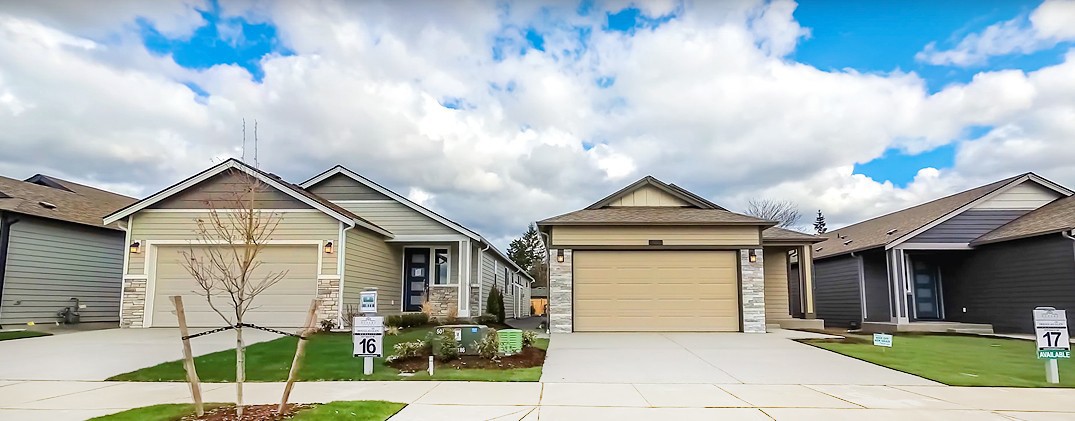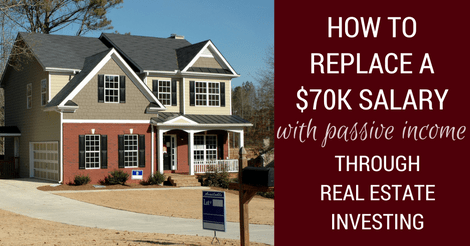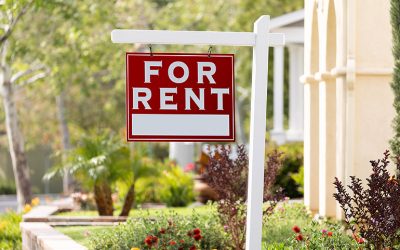
I’ve been to quite a few meetup groups over the years where I ran into new investors who have asked, “Do vacancy rates matter in real estate investing?”. I was always happy to fill them in on the specifics of vacancy rates, because, the truth is, they can make or break your investment career. The bottom line is that no matter how perfect your investment strategy seems, a high vacancy rate will wipe out your game plan, along with your ROI.
Why Do Vacancy Rates Matter with Rental Real Estate?
A vacancy is often an investor’s worst fear, and for good reason – it can evolve into a costly disaster if not taken care of. With that in mind, I can’t stress enough how much vacancy rates matter when investing in real estate. Because of this, it’s worth researching how to steer clear of areas with undesirable vacancy rates to avoid getting set up in an unprofitable location.
Now that I have your attention, let’s dive into all the details, starting with the basics:
What is a Vacancy Rate?
A vacancy rate is a standard metric used within the real estate sector that gauges the percentage of unoccupied properties in a particular area during a specific time frame. It’s an important indicator for investors and property managers to determine the demand for rentals within a market and to make informed decisions about pricing, or whether or not to move forward with investing in an area.
A location with a high vacancy rate should be avoided, as it suggests an oversupply of properties or a declining demand. On the other hand, low vacancy rates can indicate a booming market with the potential for rental income growth, which is what every investor should strive for.
Calculating Vacancy Rates

How do you calculate a vacancy rate? You simply take the number of vacant properties and divide it by the total number of properties available. For instance, using an apartment complex as an example, let’s say there were 200 units total, and 20 of them were vacant. You would divide 20 by 200, which would result in a 10% vacancy rate.
Having Some Vacancies is Normal and Expected
I want to emphasize that having some vacancies is perfectly normal and part of the process. No rental will ever be 100 percent filled, 100 percent of the time. So, don’t let the word “vacancy” scare you; it’s all part of the game.
What Causes High Vacancy Rates?
High vacancy rates can originate from a variety of causes. For example, economic downturns often lead to job losses, which, in turn, can cause people to move away from costly urban areas in search of more affordable living, all while leaving behind empty apartments and homes.
A lackluster job growth and low wages within an area can have families searching for jobs and housing in a more prosperous location. Related to this, having only one major company in the area that employs a majority of the residents in the city is also a factor. Why? Because if that company closes up shop, then all its employees will be looking for jobs in other cities.
Another contributing factor can be overbuilding. When the supply of new housing or apartments exceeds demand, it results in a surplus of rentals. In addition to this, rising crime tends to push people out of neighborhoods into safer areas, leaving behind empty rental properties that no one feels safe in.
How Frequent and Extended Vacancies Affect Rental Property Investments
Frequent and long term vacancies can significantly impact your bottom line, leading to a loss of steady rental income and possibly affecting the investor’s ability to cover ongoing expenses. This includes the mortgage payment, as well as property taxes, and maintenance. Long periods of vacancy also pose the risk of vandalism and deterioration of the property due to lack of regular use.
If an area is declining, it will be evident if its vacancy rate is consistently high. When this happens, the properties in the area may decrease in value, and in turn, your equity will decline along with it. The end result is that you may not be able to utilize equity to purchase additional rental properties, which could suppress your portfolio growth. For those unfamiliar with using equity to invest in real estate, be sure to read our post on the topic – Harnessing the Power of Home Equity to Buy a Rental Property.
In my opinion, the biggest loss from a high vacancy rate is the lack of monthly cash flow. Why? Because it can place an investor in the red when their goal is to buy a lucrative income-generating property that will set them on the path to financial independence.
With that in mind, it’s essential to know how to spot areas with low vacancy rates, which brings us to our next discussion.
How to Find Locations with Low Vacancy Rates
Okay, now that you know how detrimental high vacancy rates can be, you’ll want to increase your knowledge base on how to avoid investing in locations that have this risk factor.

1. Analyze the Area’s Performance History to See Where it’s Headed
First, you’ll want to research the area’s past market performance and economy. In doing so, you’ll see the patterns that have emerged over time, and this data paints a picture of where the area is headed – whether it’s on an upward climb or a steady decline.
You’ll also want to look into the area’s stability, and this can be accomplished by examining how it did during extreme economic downturns over past years. To get a feel for what I’m referring to, see this article that discusses one location that withstood hard times and came out on top – Lubbock Recognized as Recession-Proof City and Maintained a Strong Rental Market Throughout Pandemic.
2. Aim for Cities with a Robust Economy and a Range of Large Employers
Seek out locations that have a booming economy and more than one major employer. Look for places that sport big businesses, Fortune 500 companies, organizations, colleges, and hospitals that won’t be going anywhere anytime soon. When you have companies or organizations such as this that are firmly rooted in a location, then you will also have thousands of employees who plan on staying for the long term.
3. Check the Area’s Job Growth and Wage Increase Status
Job growth and wage increases typically go hand-in-hand with a location that boasts multiple large employers and a thriving economy. It’s essential to have low unemployment and wages that are on the rise because when you have the opposite, it can lead to people leaving the area for good jobs. Additionally, when jobs and wages are on a downward trajectory, crime starts to take over, and this can cause a spike in vacancies as well.
4. Cities With Increasing Population Growth Reflect Low Vacancies
It goes without saying that when an area attracts many people, it leads to a strong rental market with fewer unoccupied properties. Along with this, if the population growth is on the rise, there must be a few good reasons for it. This might be the area’s amazing job opportunities, or perhaps the location offers a reasonable cost of living.
5. Look for Locations that are Not Overdeveloped
When a location has a high development rate, with apartment complexes going up left and right, as well as new neighborhoods popping up at a super fast rate, it can raise the vacancy rate. This happens because the number of rentals available would outnumber the people living in the area. Also, a large number of available rentals creates competition, and this can lower rental rates. In addition to this, if a majority of the land is occupied in a particular location, available land becomes scarce, and then it becomes expensive. As you can see, buying a rental property in an overdeveloped area is a bad idea.
6. Invest in Newer Neighborhoods vs Areas with Older Homes
Statistics show that tenants are happier and stay longer in new construction rentals, as compared to older homes. Why is this the case? Because older homes tend to have more components that break down – eventually the plumbing will need to be replaced, as well as the electrical, appliances are typically old, and the roof may start leaking – you get the picture.
A build-to-rent property will boast new appliances, a new roof, new plumbing, a modern design, and they’re typically larger than homes built 50 or 60 years ago. This all equates to a lower vacancy rate because a tenant won’t want to leave when they live in a beautiful new rental. For those interested in this topic, here’s a post you’ll want to check out – New Construction Build-to-Rent Properties are a Good Investment with a Skyrocketing Demand.
You may also want to bookmark the following article I put together on why location matters in real estate investing; it provides a wealth of information that you’ll want to dive into.
Financial Freedom Power Resources
Before we wrap up this article, take a moment to view the following resources, which will set you on the path to financial independence and great wealth.
- The Financial Freedom Academy
- Freedom Number Cheat Sheet
- 90-Day Financial Empowerment Bootcamp
- Morris Invest & SDIRA Program Overview
Morris Invest Builds in Areas with a 95-96% Occupancy Rate
Now that you’ve been filled in on why vacancy rates matter and how to invest in areas that have low rates, you can start your search for a cash flowing property. However, if you don’t have the resources or the time to scout out prosperous locations, know that we have taken care of this step for you. The ground team at Morris Invest has a checklist of factors that contribute to low vacancy rates, and won’t set up camp in a location if it’s even missing one of those checklist items.
This has enabled us to provide new construction properties that have a 95 to 96% occupancy rate, which means there is a low 4 to 5% vacancy rate. Remember, there will always be some vacancies because no one stays in a rental forever. Your goal is to find the lowest vacancy rate possible, which we have achieved in our dedication to finding solid neighborhoods that meet our high standards.
If you’d like to hear more about our rentals and the locations we build in, give us a call. We would love to speak to you about our investment properties and how we take care of everything, big and small, when it comes to placing a cash flowing property in your hands.
Ready To Build Passive Income Through Rental Real Estate?
Ready to talk about your goals? We're here to show you the tools and teach you the process to begin earning legacy wealth for you and your family.








